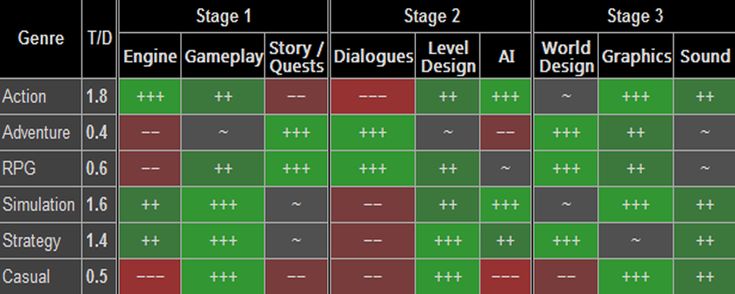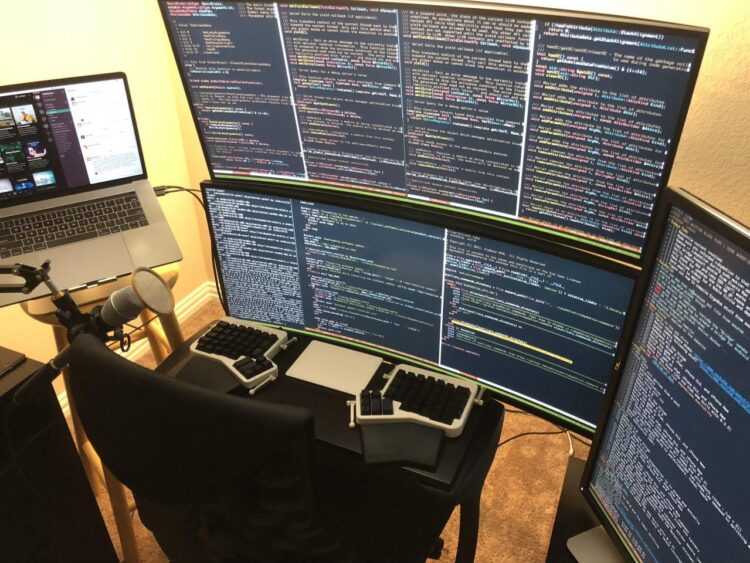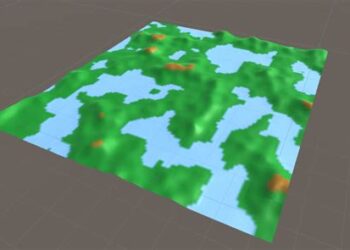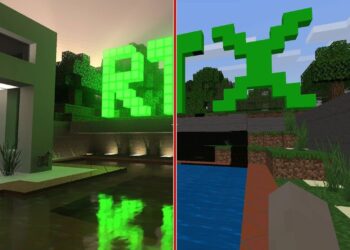The world of video game development has always been a frontier of technological innovation, a place where art and code collide to create immersive, interactive worlds. For decades, the tools of the trade have evolved, from simple pixel editors to powerful 3D engines. But today, a new force is not just changing the tools—it’s rewriting the entire rulebook. Artificial Intelligence (AI), in its many forms, has moved beyond creating smarter enemies and has become the ultimate development partner, a revolutionary force that is amplifying creativity, streamlining workflows, and unlocking possibilities previously confined to the realm of imagination.
This is not a distant future; it’s happening right now. Generative AI, machine learning, and sophisticated neural networks are being woven into the very fabric of game creation, from the initial concept to the final bug-squashing. This shift is as profound as the move from 2D to 3D. It’s enabling smaller teams to build vast, dynamic worlds, helping artists create stunning assets in a fraction of the time, and empowering designers to craft narratives that respond dynamically to a player’s every choice. For developers, AI is no longer a niche feature; it’s a critical component for building the next generation of games faster, bigger, and more intelligently.
This comprehensive exploration will dive deep into the practical and groundbreaking ways AI is reshaping the gaming landscape. We will uncover how it’s being used to generate breathtaking environments, create characters with believable intelligence, automate the grueling process of testing, and even write compelling stories. This is the new reality of game development, where the only limit is the creator’s vision, supercharged by the power of artificial intelligence.
World-Building at Scale: Procedural Content Generation (PCG) on Steroids
One of the most significant challenges in modern game development is creating vast, detailed, and believable worlds without ballooning budgets and development timelines. This is where AI-driven Procedural Content Generation (PCG) is making a monumental impact. Traditional PCG used algorithms to generate content like landscapes or dungeons, but it often resulted in worlds that felt repetitive or random. AI changes the game entirely.
A. Intelligent Environment Creation: Instead of just randomly placing trees and rocks, modern AI, particularly machine learning models, can be trained on artistic rules and real-world geographical data. A developer can now instruct an AI with prompts like, “Generate a 5-square-kilometer swampy forest in a post-apocalyptic style, with a decaying highway running through it.” The AI understands the relationships between elements—how moss should grow on certain sides of trees, where water should realistically pool, and how structures should crumble over time. This results in worlds that are not just vast but also artistically coherent and rich with environmental storytelling.
B. Dynamic and Reactive Worlds: The next frontier of AI-PCG is creating worlds that change and evolve in response to the player. Imagine a forest that realistically regrows after a fire you started, or a city whose architecture and population density shift based on the in-game economic conditions you influence. AI algorithms can manage these complex systems, ensuring the game world feels alive and persistent, offering near-infinite replayability as the environment itself becomes a dynamic character.
C. Accelerating Asset Creation: This AI-driven approach extends to the individual assets that populate the world. Generative Adversarial Networks (GANs) and other generative models can be trained on a studio’s specific art style to produce an endless supply of unique textures, 3D models for rocks and foliage, and even architectural elements. This frees up human artists from the repetitive task of creating hundreds of variations of a single asset type, allowing them to focus on the heroic, landmark pieces that define the game’s visual identity.
Beyond Scripts: The Dawn of Truly Intelligent Characters
For years, Non-Player Characters (NPCs) in games have been little more than sophisticated puppets, following predefined paths and cycling through a limited set of scripted dialogue. They were predictable and often shattered the illusion of a living world. AI, specifically machine learning and Large Language Models (LLMs), is finally giving these digital inhabitants a mind of their own.
A. Emergent NPC Behavior: Instead of scripting every action, developers are now creating sophisticated AI “brains” for their NPCs. These systems give characters a set of goals, motivations, and an understanding of the world around them. For example, a city guard NPC might have the goals of “staying warm,” “enforcing the law,” and “earning money.” This could lead to emergent behaviors where the guard patrols near a public fire on a cold night, confronts the player for petty crimes, and is more likely to accept a bribe when they are low on funds. This creates dynamic encounters that feel authentic and unscripted.
B. Generative, Unscripted Dialogue: The integration of LLMs is perhaps the most revolutionary change for NPCs. We are moving past the era of clicking through dialogue trees. Soon, you’ll be able to speak or type a question to an NPC, and an in-game LLM—trained on that character’s personality, backstory, and knowledge—will generate a unique, contextually aware response in real-time. A grizzled tavern keeper will remember that you previously caused a bar fight and might comment on it sarcastically when you ask for a drink. This technology will finally deliver on the long-held promise of truly interactive storytelling.
C. Realistic Crowd and System Simulation: In large-scale games, creating believable crowd behavior is a massive challenge. AI now powers complex simulations that govern entire virtual societies. It can manage traffic flow in a futuristic metropolis, simulate a functioning ecosystem in a jungle, or create realistic crowd reactions during a major in-game event. This systemic depth makes the game world feel less like a movie set and more like a functioning, simulated reality.
The Bug Hunters: AI-Powered Game Testing and QA

Game testing, or Quality Assurance (QA), is one of the most labor-intensive, time-consuming, and expensive parts of development. It involves countless hours of repetitive gameplay to find bugs, glitches, and exploits. Machine learning is now automating and supercharging this critical process.
A. Automated Gameplay Agents: Developers can train AI “agents” to play through their games 24/7. These agents can be taught to explore every corner of the map, test every combination of weapons and abilities, and try to “break” the game in ways a human tester might never think of. They can run through a level thousands of times in a single day, systematically searching for bugs and performance issues.
B. Intelligent Bug Reporting: When an AI agent discovers a bug, it does more than just flag it. It can automatically generate a detailed report that includes video of the glitch, system performance data from the moment of the crash, and a step-by-step log of the actions that led to the error. This provides developers with all the information they need to quickly identify and fix the problem, dramatically cutting down on debugging time.
C. Player Behavior Analytics: Machine learning models can analyze data from thousands of playtesters to identify common pain points. The AI can create heatmaps showing where players get stuck, what items they ignore, or where the difficulty spikes unfairly. This data-driven feedback allows designers to balance and refine the player experience based on actual human behavior, rather than just intuition.
The Future is Now: Emerging and Future AI Applications
The AI revolution in game development is still in its early stages. The technologies being pioneered today are opening the door to a future that will further blur the lines between games and reality.
- A. AI-Driven Animation: Traditional animation is a meticulous process. New AI techniques like motion matching are creating more fluid and realistic character movements. The AI can blend hundreds of different animations together in real-time, creating a character that seamlessly transitions from a walk to a sprint, stumbles realistically on uneven terrain, and reacts dynamically to being hit, all without a single canned animation.
- B. Personalized and Adaptive Experiences: AI will be the engine of truly personalized gaming. An AI Game Director could monitor a player’s skill level, stress, and playstyle in real-time. If you’re struggling, it might subtly reduce the number of enemies in the next encounter or provide a helpful item. If you’re breezing through, it could introduce new challenges or more complex enemy tactics. This creates a bespoke experience that is perfectly tailored to each individual player.
- C. AI as a Creative Co-Pilot: Beyond just generating assets, AI is becoming a brainstorming partner for designers. A writer could use an LLM to generate plot ideas or character backstories. A level designer could use an AI to quickly prototype different layouts for a map. This collaborative relationship between human and machine will accelerate innovation and help bring more unique and creative visions to life.
The Dawn of a New Creative Era

Artificial intelligence is not a threat to the art of game development; it is the most powerful tool ever placed in the hands of creators. It is automating the mundane, accelerating the complex, and opening up new creative avenues that were once impossible. By taking on the laborious tasks of world-building, bug hunting, and systemic simulation, AI is freeing developers to focus on what truly matters: artistry, storytelling, and crafting unforgettable player experiences.
The games of the next five to ten years will be profoundly shaped by this technology. They will feature worlds of unprecedented scale and reactivity, populated by characters who feel genuinely intelligent and alive. The stories they tell will be more personal, more dynamic, and more immersive than ever before. We are standing at the dawn of a new golden age of interactive entertainment, an age where the creative potential of game developers is not just enhanced but truly unleashed by the revolutionary power of AI.












